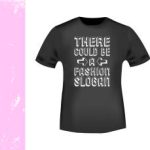You don’t want to be told that your garments can’t sell in the target market because they lack a label. Clothing labels are a crucial element of fashion design and require more than just their placement on the garment.
You don’t want to be told that your garments can’t sell in the target market because they lack a label. It may be missing important information from the label. Clothing labels are a key element of fashion design and require more than just their placement on the garment. Not only are they needed to meet the requirements of different countries, but they are also an important piece of information for consumers. Labels must give the customer clear instructions on how to care for their garment. This will also help to establish your brand.
Care labeling requirements are different in America, Canada, and Europe. In most countries, a simple “made in China tag” is no longer sufficient. Although no two countries have the same labeling regulations, the US standards are a good benchmark to follow. You’re less likely than not to run into problems when importing clothing into the US or elsewhere if you follow these guidelines.
This article will discuss some of the basic legal requirements that apply to clothing labels.
United States Requirements
The US Customs and Border Protection and the FTC (Federal Trade Commission) manage the labeling requirements of textile and apparel products in the United States. The FTC is responsible for care labeling in the United States, while CPB controls and inspects textile products that enter the country. Businesses that do not comply with these laws may be subject to monetary penalties. If you ignore the FTC’s administrative orders, you could face a civil fine of $16,000 for each violation. A care label must include:
* Country of Origin (where the product was made).
The American Society for Testing and Materials (ASTM) has developed a set of care labels (see image below).
* English Language
* Fibre Content (i.e., 99 percent cotton, 1 percent spandex)
* Manufacturer/dealer identification
EU Requirements
EU textile regulations may not be as strict as the US, but they still contain some guidelines depending on the country. In general:
The country of origin is not necessary
The labeling of care instructions is not mandatory
* No manufacturer identification is required
* The label must not contain any abbreviations except for those used in mechanized processing codes
The target language/s must be used
* Fiber composition must be included
Contact the local authorities of the country you are interested in for the rest. Ask the following questions.
- Does the labeling of labels have to include the country of origin?
- What is the best way to describe fiber composition?
- What language is required?
- Do I need a written or graphical label?
- Do I have to include warning text or labels?
Multiple country labels
Labels can be designed to comply with multiple countries’ regulations at once. Many large fashion labels meet the textile labeling standards of both the European Union and the US simultaneously. You only need to create one label file with all the required information for each country. US Office of Textiles and Apparel has developed a chart of labeling requirements that helps to understand the differences in international standards. The image below shows the labeling requirements.
Working With Clothing Manufacturers
You can design your labels however you like as long as you follow the regulations. Garment factories have standard labeling procedures for garments. However, if you provide clear instructions, they can be altered to include a brand logo or artwork. While the process may seem simple, you should ensure that your garment manufacturer receives these details:
- Labels in.ai and.eps formats
- Printing position on the garment
- Colors required
- Dimensions
- A font file
- Label material
- Label design
Notes on Children’s Clothing
Both the United States and Europe have similar labeling requirements for adult and child clothing. The EU, however, has stricter safety standards for clothing made for children. These include requirements regarding metals, dyes, and other materials. All new and used nightwear for children in the UK must be labeled with a warning about fire hazards. Clothing made of highly flammable fabrics cannot be sold. Australia, on the other side, does not make a distinction between labeling requirements that apply to adults and children.




